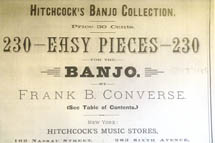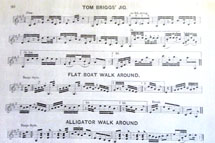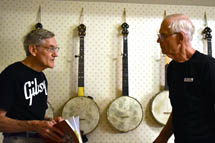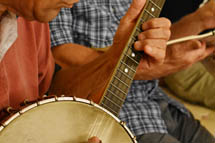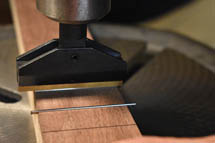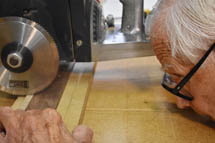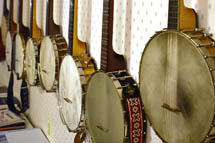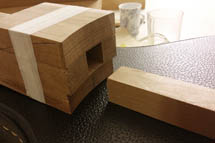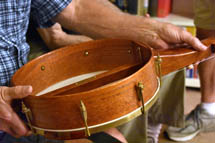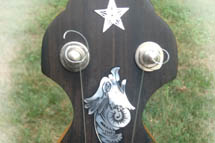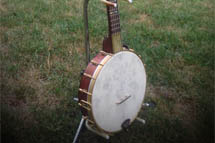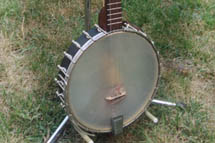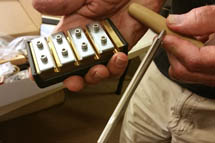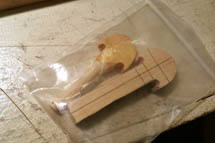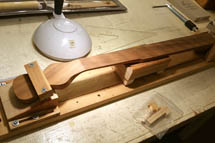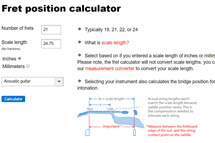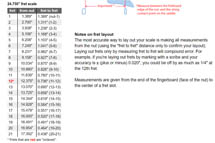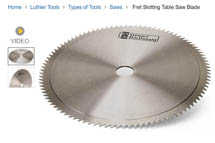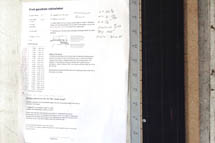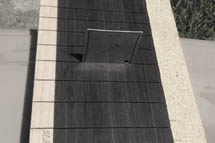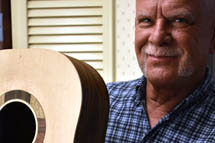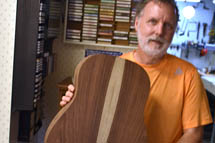Meeting
Jul 14, 2019
Click on any image to start the slide show.
Attendees
- Members
- Kenny Craft
- Michael Dean
- Robbie Dummitt
- Jack Gellerstedt
- David Motley
- Tom Pafford
- Frank Riner
- Larry Sakayama
- Howard Wilson
The Old Plantation - watercolor, 18th century, found in the vicinity of Charleston, SC

The painting illustrates one musician playing a gourd-shaped instrument resembling a banjo.
Robbie's resonator banjo
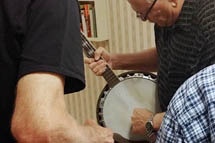
From Robbie: " It belonged to my dad. I was getting advice from Jack on how to adjust the neck. It's a resonator style so the back must be removed to make the necessary adjustments. Jack thinks it's an early 5 string Fifties model. I'm not sure of the brand. May learn more when I open it up."

Jack Gellerstedt's shop in Forest, VA
Main Events: All about Banjos - history, period banjos, construction...
And about fretting - layout, cutting slots, inserting...
All About Banjos
Jack is an expert on banjos. He gave us a brief history of the banjo, its origins in Africa, and arrival in the States.
Jack made most of the banjos you see on the wall in the photos below. In the first photo, the banjos are displayed in a historical timeline (from left to right).
Fretboard layout, cutting fret slots..."
Jack demonstrated how he lays out fret positions and cuts fres slots. He uses the Stewmac online fret calculator to determine fret positions. You enter the number of frets, scale length, units, and instrument type. It then calulates the fret positions. It's best to measure from the nut rather than fret to fret to minimize error. Check it out here.
In our case we wanted 21 frets, 24.75" scale length, measured in inches, for an acoustic guitar.
Jack uses the Stewmac Fret Slotting Table Saw Blade in his radial arm saw. The radial arm saw has the advantage of being able to see the slot as it's being cut.
He built a jig to hold the fretboard for slotting. The jig has a fence the length of the fretboard and another fence prependicular to the first at the nut end. Leaving some space to the left of the nut, he marks the nut and fret positions on the long fence of the jig. The jig is clamped to the fence of the radial arm and guide slots are cut at the nut position and each marked fret positions.
The fretboard is marked with the shape of the final fretboard, leaving some space on the nut side (beyond the nut) to allow the fretboard to be screwed to the jig. Jack uses 3 screws (all outside of the final fretboard shape to firmly hold it in place.
The fretboard is marked with the shape of the final fretboard, leaving some space on the nut side (beyond the nut) to allow the fretboard to be screwed to the jig. Jack uses 3 screws (all outside of the final fretboard shape to firmly hold it in place.
Below:
- Jack explains the jig to Tom and Michael.
- Layout of fretboard, Stewmac position calculator printout, fretboad on carrier baord.
- Ready to cut slots on the radial arm saw with Stewart-McDonald blade (blade guard removed for picture).
- Fret slots complete, with Stewart-McDonald fret depth gage. Accurate .023” slots are achieved and cut to the proper depth.
